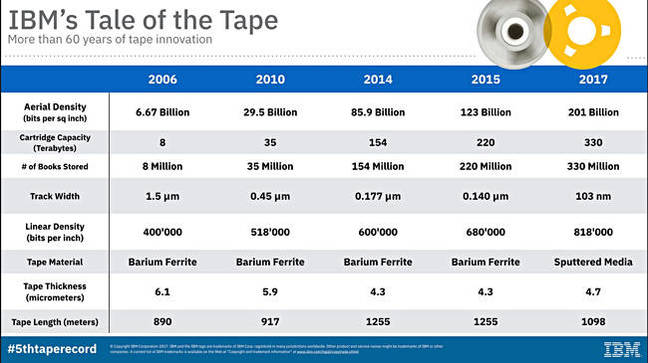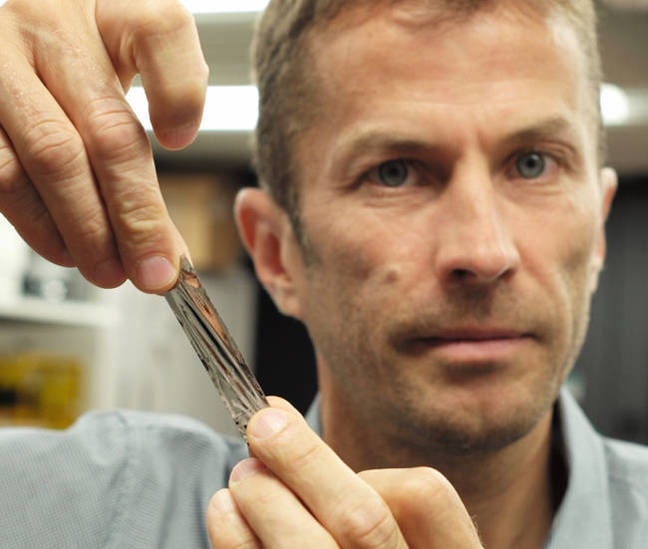This article is more than 1 year old
Sputtering bit-blasters! IBM's just claimed densest tape ever record
Yes, again. Sony – thank you for the tape you gave to me
IBM has claimed its fifth-in-succession world tape density record with a 330TB raw capacity technology using Sony tape media tech.
Back in April, 2015 IBM and Fujitsu demonstrated a 123 billion bits/in2 220TB tape using so-called Nanocubic technology and barium ferrite tape media.

IBM tape density records
This time around, IBM's tape drive researchers are working with Sony Storage Media Solutions and its sputtered media. Engineering developments have enabled an areal density of 201Gb/in2.
Their technology includes:
- New signal-processing algorithms for the data channel, based on noise-predictive detection principles, enabling reliable operation at a linear density of 818,000 bits per inch with an ultra-narrow 48nm-wide tunnelling magneto-resistive (TMR) reader.
- A set of combined advanced servo control technologies that enable head positioning with an accuracy of better than 7 nanometres.
- Use of a 48nm-wide TMR hard disk drive read head, which enables a track density of 246,200 tracks per inch, a 13-fold increase over the TS1155 tape drive.
- New low-friction tape head technology that permits use of very smooth tape media.
Sputtering in general involves bombarding a target material with energetic particles such as non-reactive argon gas ions, causing atoms to be separated from the target source and deposited on a substrate. This takes place in a vacuum container with atoms ejected from the target source needing to attach themselves to something, like the substrate, so as to regain thermodynamic equilibrium.

The IBM Sony sputtered tape media
Specifically in this tape instance, sputtering means the use of such sputter deposition to create what IBM is calling a nano-grained magnetic layer on the tape substrate.
IBM Fellow Evangelos Eleftheriou said in a canned quote: “While sputtered tape is expected to cost a little more to manufacture than current commercial tape that uses barium ferrite (BaFe), the potential for very high capacity will make the cost per TB very attractive, making this technology practical for cold storage in the cloud.”
Big Blue reckons this secures the viability of scaling the tape tech roadmap for another decade. So... have confidence in the LTO Ultrium capacity roadmap out to LTO-12 and 190+TB in eight to nine years. Tape has a long way to go yet, baby. ®
